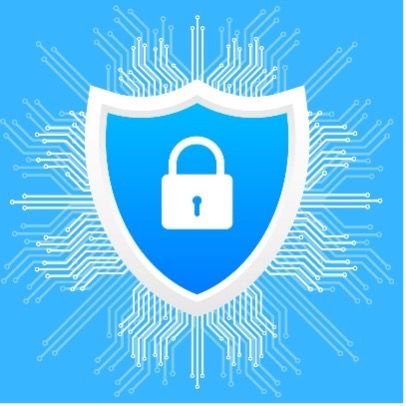
Picture this - We're embarking on a journey into a world where every speck of data, as personal as your cherished family photos or as crucial as your financial information, dwells securely within a digital fortress. In this utopia, every byte of data, no matter how seemingly insignificant, is guarded with unwavering vigilance. We are not talking about a far-off fantasy but rather a destination within our grasp as we traverse the path of data security best practices. These practices, these unwritten laws, are the blueprints for our digital fortress, the foundational stones that will fortify our defenses.
Guarding the Digital Vault: A Beginner's Guide to Navigating the Cybersecurity Landscape
Imagine you're the new manager of a high-tech bank vault. It's your job to protect the treasure within - precious data. But even in this new job, you'll find familiar challenges. Consider these challenges as you would in a classic heist movie.
The opening scene of our heist movie is the "initial access" phase. This is where our crafty thieves are looking for any way to sneak into the vault. They might use a method akin to a Server Side Request Forgery (SSRF) attack - let's call it the "inside job" trick. They convince an employee on the inside to open the vault for them. As the new vault manager, you can prevent this with the equivalent of a well-trained security team and routine security checks. This would be a Web Application Firewall (WAF) and periodic vulnerability scans in the digital world. It's like ensuring that every guard is alert and that you're constantly checking for potential breaches.
But what if there's a chink in your armor? A tiny misconfiguration in your WAF, much like a guard who's not trained correctly, could still allow our thieves to get messages to the inside - say, to services like the AWS Metadata Service. Just like you'd need continuous training and regular checks on your guards, you need constant monitoring and regular vulnerability scanning in the cyber world.
But our thieves are crafty. They might try to disguise themselves as employees to get access credentials like the AccessKeyId and SecretAccessKey. This is why you, as the manager, would keep a close eye on the use of administrative accounts, much like how you'd monitor your staff in the vault. Incorporating principles like least privilege and ensuring separation of duties are like managing access permissions to the vault and not allowing any single guard or employee too much power.
Now, imagine our thieves communicating with their team outside the bank, using networks like TOR to hide their location. This is the "Command and Control" phase of an attack. You'd counter this by blocking access from suspicious locations and monitoring communication lines - the digital equivalent of blocking IP addresses from TOR network exit nodes and malicious proxy servers.
Lastly, you must know the routine operations of your vault inside out. The comings and goings, the expected data flows for users and systems, are your baselines. Any deviations would indicate a potential heist, helping you to effectively monitor the vault and detect any abnormal events. This need for vigilance extends to external service providers and any unauthorized personnel, connections, devices, and software. It's like being aware of every guard, every employee, every visitor, and every piece of equipment in the bank.
So, defending against a cyberattack is much like preventing a bank heist. It requires multiple layers of security controls, vigilant monitoring, and prompt corrective actions. This is your mission as the new manager of the digital vault. It's a hefty responsibility, but with the right knowledge and tools, it's an achievable one. As we journey further into the digital age, it's a role that's becoming ever more critical. Welcome to your new job - the world is counting on you.
1. Discover and Label the Treasures
Envision yourself as an explorer venturing into an uncharted wilderness. Before you can build fortifications, erect watchtowers, or plot escape routes, you first need to know the lay of the land to understand its hills and valleys, its rivers and forests. The same logic applies to your data.
Identifying and classifying data isn't a tedious administrative task. Rather, it's a crucial first step akin to mapping the vast landscape of your organization. It's about acknowledging the value and sensitivity of the information at your disposal, categorizing it based on these factors, and treating it as the treasure it truly is. Because if there's one thing any experienced explorer knows, you can't protect what you can't see.
2. A Shield for All: The Universal Security Policy
Now, let's take another leap of imagination. Picture a knight, resplendent in shining armor, but heading into battle without a helmet, under the misguided notion, "My head won't be hit." You can probably foresee what happens next. The knight is vulnerable. Like this knight, your data, whether in a bustling database or a solitary file on a remote server, requires equal protection.
Creating a comprehensive cybersecurity policy that acts as an all-encompassing shield isn't an option—it's an absolute necessity. Such a policy ensures that you're not left vulnerable, that no piece of data goes unprotected, and no potential breach goes undetected. It forms the heart of your data security strategy, the shield protecting your treasures from every conceivable angle.
3. The Keymaster: Identity and Access Management
In our data protection journey, we now come to the formidable gatekeeper of our imagined fortress. This gatekeeper, tasked with ensuring only the right people gain access, and only at the appropriate times, embodies the essence of Identity and Access Management (IAM) in our digital realm.
When married with a least-privilege access policy and fortified with multi-factor authentication, an IAM solution is like the vigilant gatekeeper of your digital fortress. It puts you in command of the drawbridge, providing granular control over who can access your data and when. This approach strengthens the initial line of defense, allowing you to decide who gets the keys to your kingdom.
4. Armed and Ready: Employee Security Training
Think of your organization as an army standing at the ready. In any military force, the strength is not just in its numbers or weapons but in the training and preparedness of each soldier. Similarly, your organization's strength lies in the knowledge and awareness of every member.
Effective data security isn't solely about outfitting your organization with high-tech systems and advanced software. It's also about equipping your people with the skills and knowledge to act as an additional line of defense. Training your employees to handle sensitive data responsibly, identify potential threats, and react appropriately when an incident occurs, can transform your workforce into a battalion of vigilant guardians, strengthening your defense strategy.
5. The Invisible Cloak: Data Encryption

Picture your most valuable treasures hidden under an invisible cloak, out of sight from nefarious eyes. This isn't an excerpt from a fantasy novel but a strikingly accurate analogy for data encryption. Data encryption serves to transform your information into a complex code, a cryptic language that is undecipherable to anyone without the proper decryption keys.
Imagine someone, an unwanted intruder, miraculously breaking into our digital fortress and managing to get their hands on your data. But all they see is gibberish, a jumble of indecipherable symbols. That's the power of data encryption at work. It serves as an extra layer of security, rendering your data unintelligible at rest and during transit. Even if the data lands in the wrong hands, it remains a locked chest whose treasure remains inaccessible.
6. Setting Up Watchtowers: Security Monitoring and Auditing
No well-guarded fortress is complete without its watchtowers. These towering structures provide a panoramic view of the surrounding landscape, making spotting any suspicious movements from afar easy. Security monitoring and auditing are these watchtowers in our digital fortress.
They offer a holistic view of your data security landscape, acting as an early warning system that monitors unusual activity or emerging vulnerabilities. These tools ensure you're proactive, not reactive, in your data security approach. You're the watchful guardian, prepared to act before a threat materializes instead of scrambling to respond after the fact.
7. The Safety Net: Backup and Recovery
Even in our well-guarded, impenetrable fortress, there's always a chance something could go wrong. A surprise attack, an unforeseen vulnerability, or a moment of human error could potentially put your data at risk. That's why having a safety net is non-negotiable.
This safety net comes in the form of a comprehensive backup and recovery plan. Imagine being able to rewind time to restore your fortress (and all its treasures) to its state before the attack occurred. That's the power of effective backup and recovery. Should a breach occur, having frequent, reliable backups means you can restore your operations with minimal disruption, getting your fortress back on its feet in no time.
8. Always on Guard: Regular Software Updates
Picture leaving the gate of your fortress wide open, practically inviting invaders in. That's the scenario you're creating when software isn't regularly updated. Each update is akin to strengthening the fortress walls, sealing cracks, and fortifying the gates.
Failing to install updates promptly means vulnerabilities go unpatched, leaving a door open for cyber threats. Regular updates enhance functionality and fix security bugs, patching vulnerabilities and bolstering your defense. It's a seemingly simple step with immense significance in your data security strategy.
Navigating the vast data security landscape can initially seem like scaling a mountain. But, as we've journeyed together through this terrain, we've discovered that understanding and applying data security best practices doesn't have to be an uphill battle. We've unveiled the blueprints of our digital fortress, unearthing invaluable insights and arming ourselves with powerful tools along the way.
Our destination, the impenetrable fortress that securely houses our valuable data, may still seem distant. But remember, every step taken, every practice implemented, and every strategy devised brings us closer. Today, we're not just dreaming of a world where data is universally protected—we're building it, one best practice at a time.
This quest isn't solely about securing data—it's about cultivating trust, encouraging growth, and envisioning a future where data security isn't an afterthought but an integral part of every data-driven decision. The future of data security is firmly within our grasp. As we stand at the precipice of a new era, we must remember that the key to this future is not just in the hands of a few but in the hands of all. So, let's continue building this future together, one best practice at a time. The future of data security starts with you.

